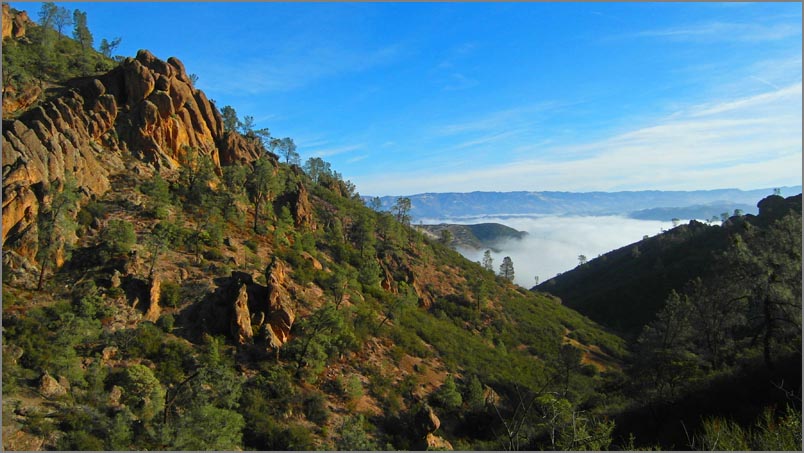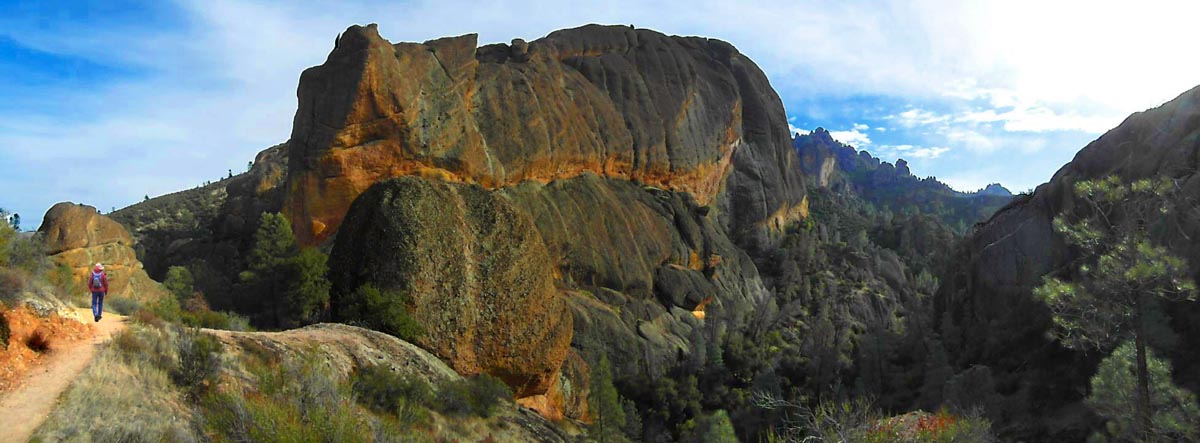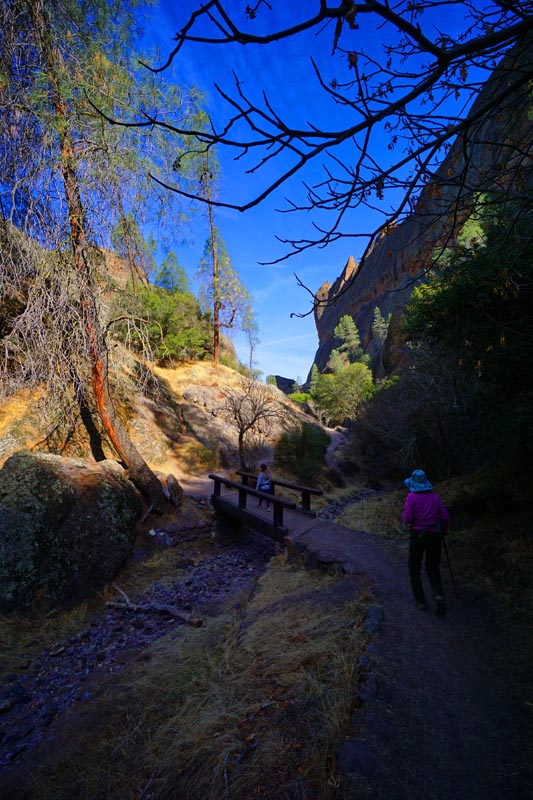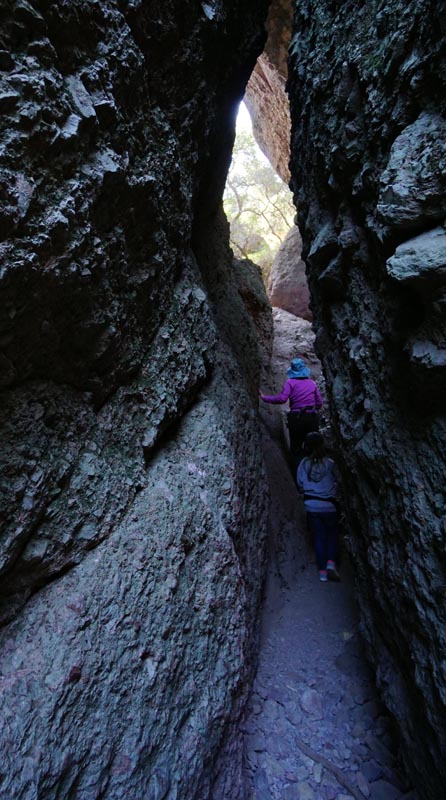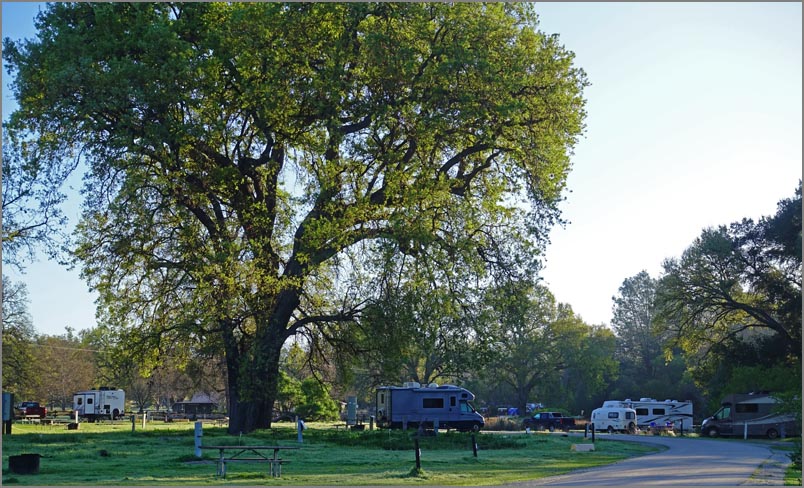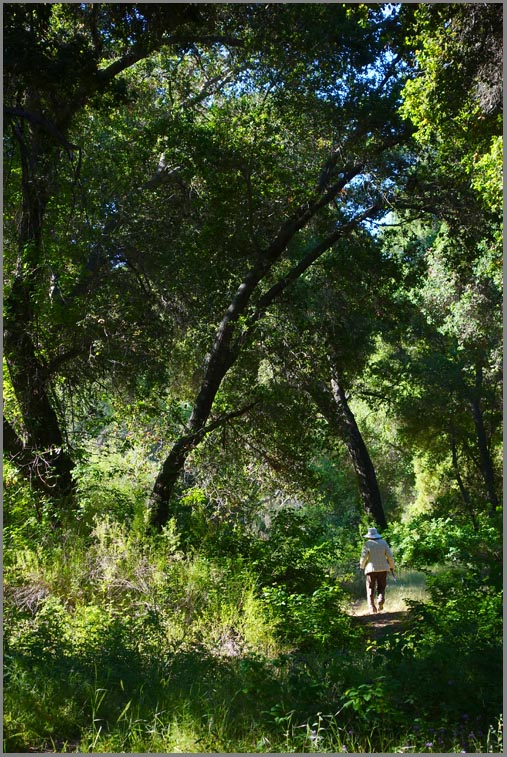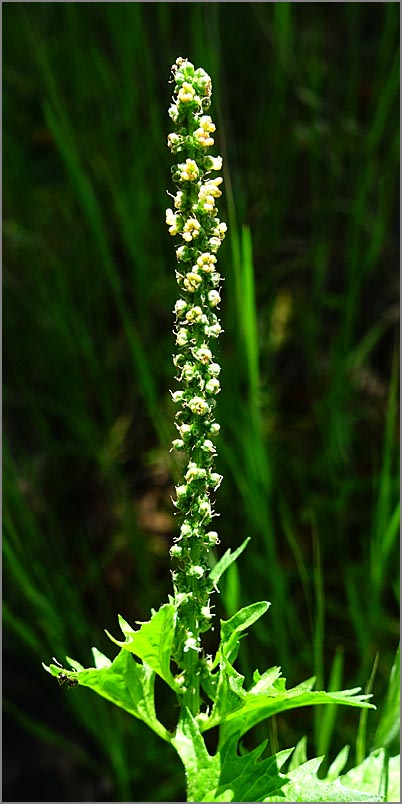|
Most
of photos taken were in the spring of 2020. It was a pivotal time as the
Covid 19 lockdown was in effect for most of the Bay Area, but thankfully our
county was still open as was Pinnacles. It would have been had it not been
under the control of Federal Government as a National Park. What we did see the
two times we were there were well spaced campers and respectful hikers keeping
their distance. What really helped was limited access. We don't understand why
other California parks couldn't have been operated this way and kept open.
For a complete list of plants seen on
this hike, go to bottom of page or click
here. |
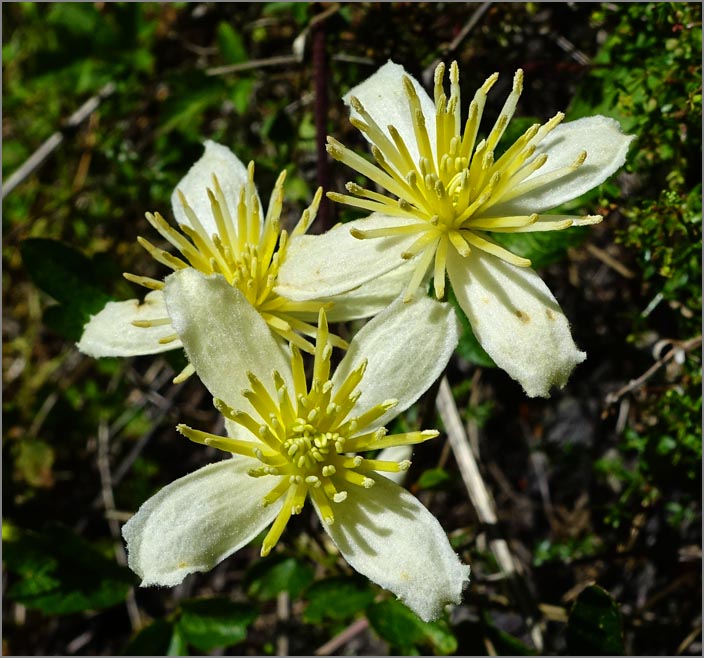
Chaparral Clematis (Clematis lasianta): This native Clematis can grow up 20' into trees. It likes itís roots in the shade but itís leaves & flowers in the sunójust like the ornamental varieties. |
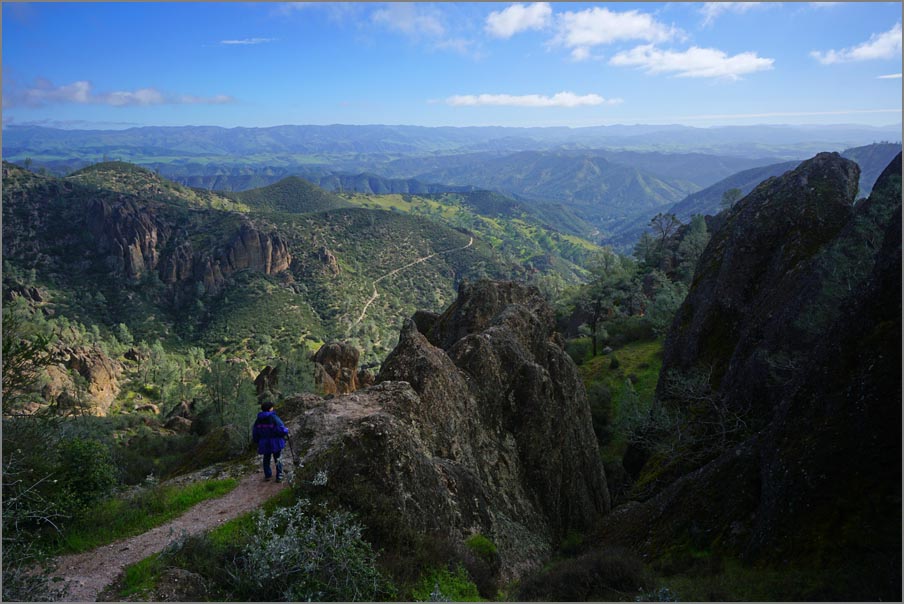 A view from the High Peaks Trail looking east over the park. The trail not only traverses amazing geology and flora, but views can be had of both sides of the park, and if lucky, a number of raptors as well as California Condors. |
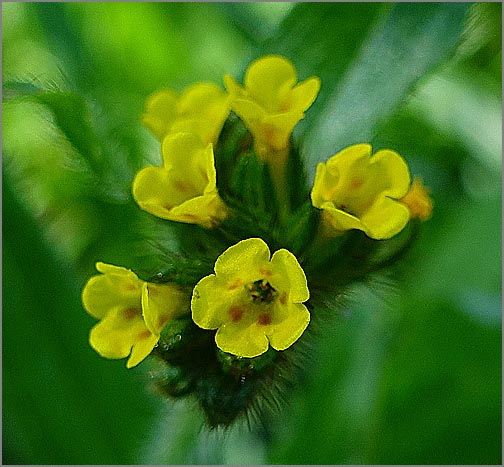
Close up of Common Fiddle neck (Amsinckia intermedia). This native likes
grassy hillsides & open spots. It also is a frequent bloomer in fire ravaged
areas.
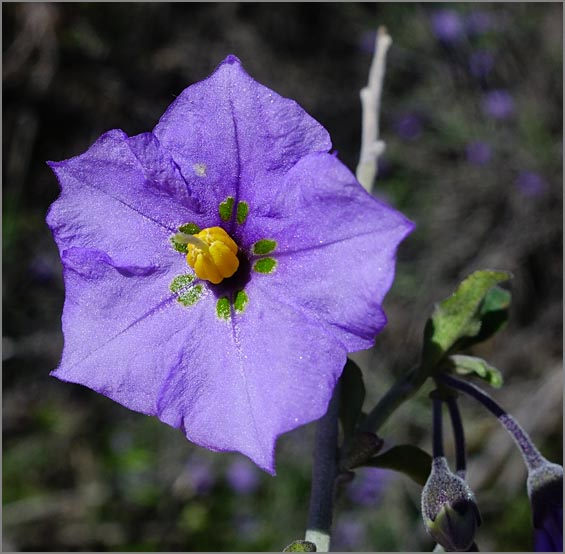
Blue Witch (Solanum umbelliferum) is a native bush that can get
about 5 feet tall. It can flower much of the year if the conditions
are right.
Left: Prairie Star (Lithophragma
parviflorum): A native perennial which is only about 12" tall at maximum. It
likes to live in grassy or sagebrush lands.
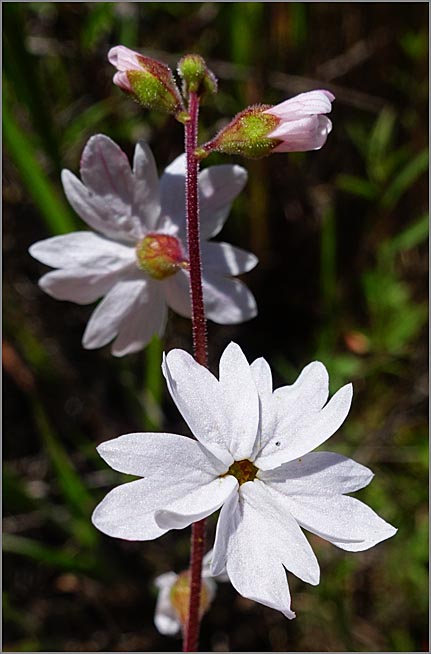
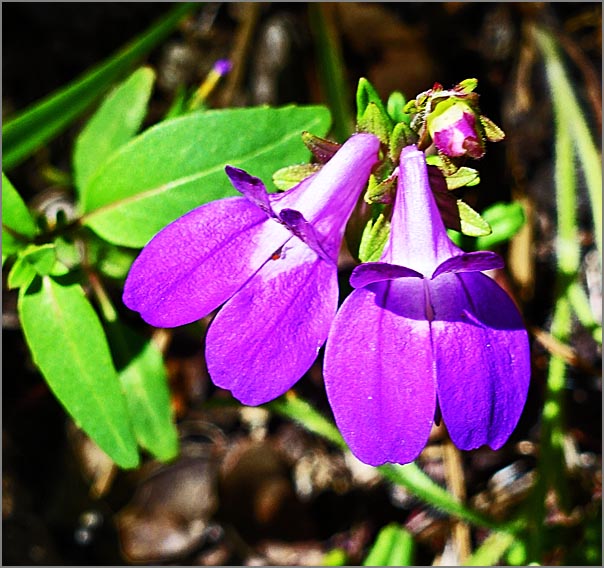
Above: The Blue
Eyed Mary (Collinsia sparsiflora):
We found several hillsides of these annual natives.
The eastern side of the park is accessed from Hwy 25. For a reasonably strong
hiker, all the features of the park are available from either end. But the High
Peaks Trail and Bear Gulch Cave Trail are closer here.
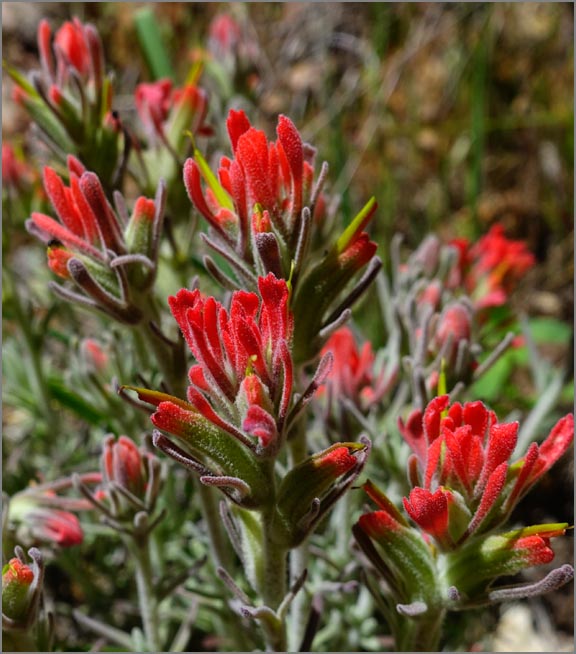
Above you have the
Woolly Paintbrush (Castilleja foliolosa) It's a parasitic or semi parasitic
native shrub. It will grow up to 3' tall & parasitizes several bushes like Chamise or Sagebrush.
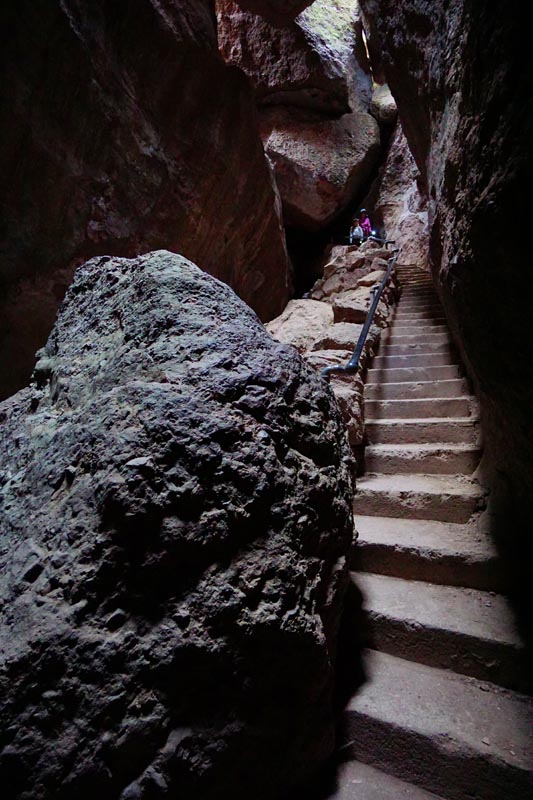
Climbing out of Bear Gulch towards the reservoir.
Left: Our native Coast Range Triteleia (Triteleia
lugens) grows from a corm (bulb) & is considered slightly endangered by the CNPS.
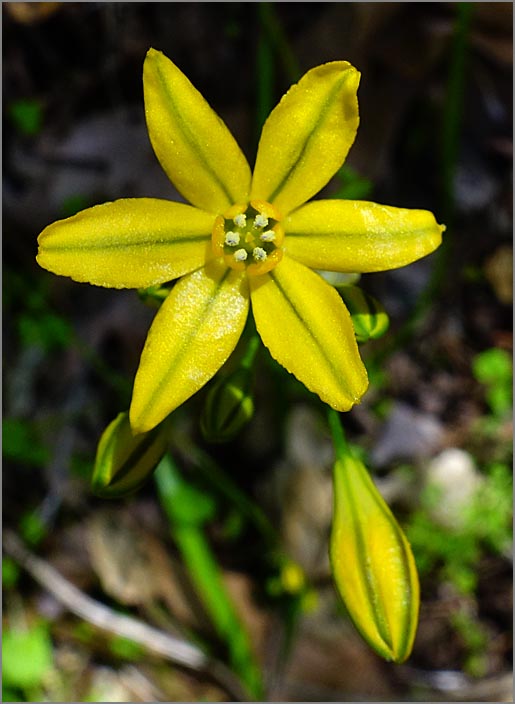
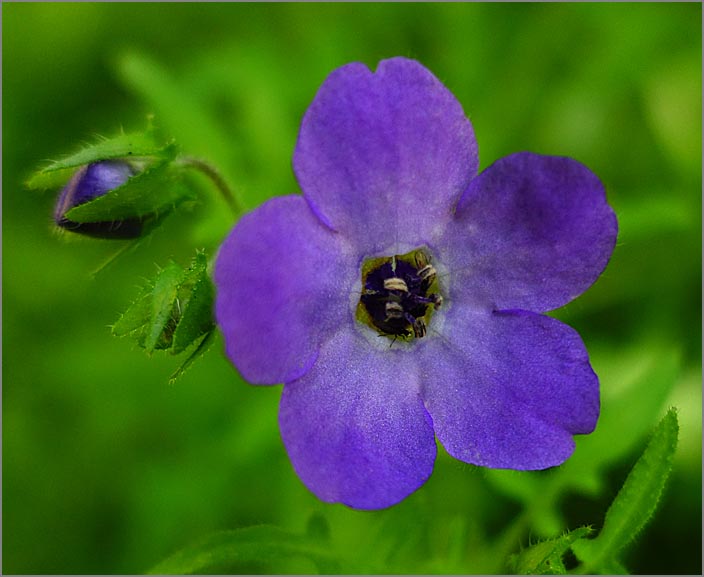
Above: The native blue
Fiesta Flower (Pholistoma auritum) is a relative to Forget-Me-Not flowers.
Left: The native Scarlet Penstemon (Penstemon
centranthifolius) grew about 2' tall among the pines & oaks. This was difficult
to take as the camera keeps focusing on the background.
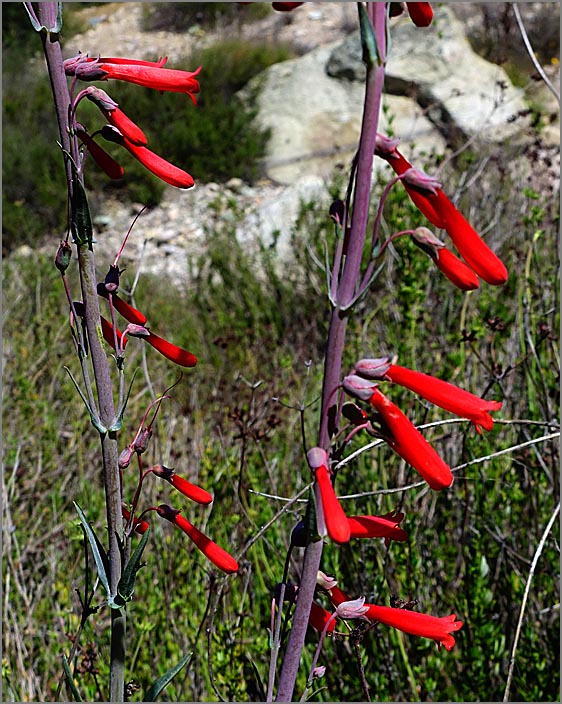

Above: These
strange tiny flowers are the blooms of the Woolly Yerba Santa (Eriodictyon
tomentosum). It is a handsome pubescent native shrub which grows in hot sunny
areas at Pinnacles.
Pinnacles is a very unique park with unusual geology, flora and
fauna. Plus it's only about an hour from the southern Bay area. It's one of our
favorite that we have been coming to it for years. We think it's one you will
enjoy.
Blooming Plants Not
Photographed: NN=Non Native
Achillea millifolium (Yarrow)
Amsinckia menziesii (Small Flowered Fiddle neck)
Amsinckia tessellata (Devilís Lettuce)
Baccharis pilularis (Coyote Bush)
Baccharis salicifolia (Mule Fat)
Calystegia occidentalis (Western Morning Glory)
Carduus pycnocephalus (Italian Thistle) NN
Chaenactis glabriuscula (Yellow Pincushion Flower)
Cirsium occidentale (Western Thistle)
Clarkia unguiculata (Elegant Clarkia)
Clarkia purpurea (Wine Cup Clarkia)
Claytonia parviflora (Minerís Lettuce)
Collinsia heterophylla (Chinese houses)
Delphinium parryi (Parryís Larkspur)
Cryptantha ssp. (Cryptantha)
Dendromecon rigida (Bush Poppy)
Dichelostemma capitatum (Blue Dicks)
Dichelostemma congestum (Ookow)
Diplacus aurantiacus (Sticky Monkey Flower)
Erodium botrys (Big Heron Bill) NN
Erodium cicutarium (Red stemmed filaree) NN
Erythranthe guttata (Seep Monkey Flower)
Galium aparine (Bed straw)
Hypochaeris glabra (Smooth Catís Ear) NN
Lasthenia californica (Goldfields)
Lathyrus vestitus (Hillside Pea)
Logfia gallica (Cotton rose) NN
Lupinus bicolor (Miniature Lupine)
Lupinus microcarpus (Chick Lupine)
Madia gracilis (Slender Tarweed)
Marah fabacea (Wild Cucumber)
Matricaria discoidea (Pineapple Weed)
Melilotus indicus (Sweet Yellow Clover) NN
Micropus californicus (Q-Tip Plant)
Nasturtium officinale (Watercress)
Phacelia distans (Common Phacelia)
Plagiobothrys ssp. (Popcorn Flower)
Plectritis macrocera (White Plectritis)
Quercus wislizeni (Interior Live Oak)
Salix lasiolepis (Arroyo Willow)
Sambucus nigra ssp. caerulea (Blue Elderberry)
Sanicula crassicaulis (Snake Plant)
Senecio vulgaris (Common Groundsel) NN
Stachys bullata (Ca. Hedge Nettle)
Spergularia rubra (Purple Sand Spurry) NN
Thysanocarpus curvipes (Lace Pod)
Toxicodendron diversilobum (Poison Oak)
Urtica urens (Small Nettle) NN
Vicia villosa (Hairy Vetch) NN
Vinca major (Vinca) NN
Viola pedunculata (Johnny Jump Up)
Wyethia helenioides (Grey Mules Ears)
Ferns:
Dryopteris arguta (Wood Fern)
Pellaea andromedifolia (Coffee Fern)
Pellaea mucronata (Birdís Foot Fern)
Pentagramma triangularis (Gold Back Fern)
Woodwardia fimbriata (Giant Chain Fern)
